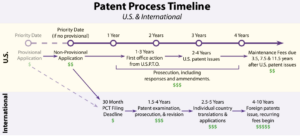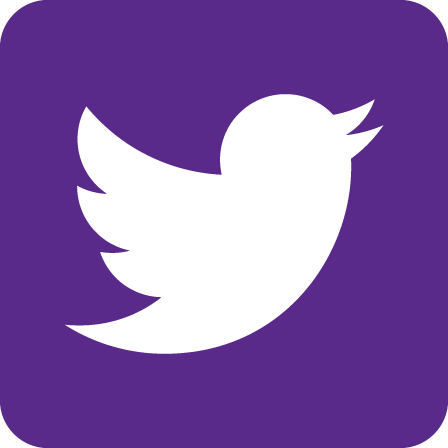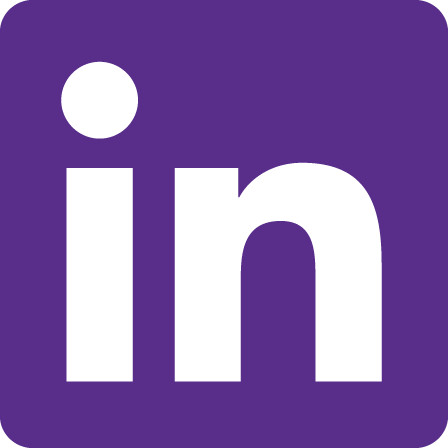Intellectual Property Overview

The process of transferring knowledge, ideas, discoveries and innovations from the university to the public is called technology transfer. The technology transfer process considers many factors to develop and commercialize inventions. These factors include stages of development, market potential, industry interest, intellectual property strength, and commercialization options. Initiation of this process begins by submitting an invention disclosure. Disclosure of inventions to ECU is important for a variety of reasons. First, ECU has a duty to review and respond to inventions that are developed with institutional resources. Second, ECU is required to submit periodic reports to the federal government about the status of federally funded inventions. Third, Licensing and Commercialization can provide valuable guidance in the evaluation, protection and development of inventions.
University Ownership of Inventions
Consistent with the intellectual property policies of ECU and the University of North Carolina System, ECU owns the intellectual property rights generated from the use of ECU facilities, equipment or funds. This is particularly true for patentable inventions generated by faculty, staff, students and guests of the university. However, ownership of copyright varies, depending on the individual who created the work and the resources used to develop it. For example, ownership of copyright in works made by faculty using exceptional university resources or produced at the direction of the university are generally owned by the university. Ownership of traditional academic works, such as manuscripts, curriculum, books, lectures, and teaching materials using standard university resources, such as a desktop computer, are generally owned by the author.
Student Inventions and Ventures
Ownership of copyright in works such as papers and theses generally belong to the students. The university typically makes no claim to ownership of inventions developed with non-university resources or use of general resources typically made available to students, such as dorm rooms and computing and library facilities. However, standard university ownership applies for exceptional use of university resources that are not ordinarily made available to students enrolled in a class. As the university builds its entrepreneurial ecosystem and encourages student entrepreneurship by providing programs, resources and opportunities for students, an exception exists to university ownership of student inventions. Such exceptions apply to specific class projects or institutional programs, resources and opportunities that relate to entrepreneurship. This exception does not apply if an invention incorporates, depends on, or is derived from ECU intellectual property. Students and faculty that have questions regarding ownership, should contact L&C for guidance.
Bayh Dole Act
In addition to the benefits of technology transfer, the federal government strongly encourages commercialization of inventions developed with grant support. The Bayh-Dole Act is primarily responsible for allowing universities to maintain ownership of intellectual property rights that arise from federal grant support. In exchange for the right to maintain ownership of these discoveries, the university commits to diligently pursue commercialization efforts, provide regular progress reports to the federal government, and give commercialization preferences to U.S. small businesses. All federal agencies, including the National Science Foundation and the National Institutes of Health require compliance with Bayh Dole.
Patents
The process of applying for and obtaining a patent should be understood prior to submitting a patent application as several criteria are required to meet the standards of patentability. The patent process begins with the preparation and filing of a patent application and continues through a lengthy negotiation process with a patent examiner from the US Patent & Trademark Office (USPTO) called patent prosecution. The prosecution of a patent application typically is filled with rejections, cancelled claims, and filing of new applications. Despite its complexity, the prosecution process is designed to generate strong and effective patent protection that best benefits the applicant and society. The process takes a firm commitment of time on the part of the inventor, as well as a significant financial investment.
Statutory Requirements
A patent application must address the following statutory requirements.
- Statutory Subject Matter Patents may only be issued for subject matter considered legally patentable. These include new and useful processes, machines, articles of manufacture, and compositions of matter or improvements to processes, machines, articles of manufacture, and compositions of matter. Examples of patentable subject matter include chemical compounds, chemical compositions or mixtures, machines, manufacturing processes, therapeutic & diagnostic methods, electronic devices, microorganisms, and computer software.
- Novelty In order to prove that an invention is novel, a thorough search must be made to prove that the invention a) is not already patented by another party; b) is not otherwise described in any printed or electronic publication; and c) has not been sold, offered for sale, or in public use. U.S. patent law allows a one-year grace period for filing patent applications if an unintended public disclosure is made but most other countries require absolute novelty. This means that there can be absolutely no public reference or use of an invention before an international patent application is filed.
- Utility The applicant of a patent application must prove that the invention serves a useful purpose. For instance, a new mathematical algorithm may meet the statutory subject matter requirement, but if the algorithm does not specify a practical purpose other than pure intellectual curiosity, then it will not meet the practical utility test.
- Enablement The application must demonstrate proof of concept that the invention will work. This does not mean that the final embodiment of the invention must be defined, but it does require proof that the concept will in fact work as described. For example, a preliminary prototype device may prove effectiveness of a new mechanical process.
- Obviousness A patent may not be issued if the difference between the invention and any prior art would be obvious to someone having ordinary skill in the art. A combination of several different known elements should be considered when evaluating. For instance, adding A+B+C to generate D may be a logical progression of thought, and thus present an obviousness challenge. However, adding A+B+C= M may demonstrate an unexpected outcome, and therefore may meet the standard.
- Statutory Subject Matter You can only obtain patents on material that is considered eligible. This includes new and useful processes, machines, articles of manufacture, and compositions of matter. Examples of patentable subject matter include chemical compounds, chemical compositions or mixtures, machines, manufacturing processes, therapeutic & diagnostic methods, electronic devices, microorganisms, and computer software.
Types of Patent Applications
The patent process may involve the filing of any of the following types of patent applications.
- Utility Patents offer protection to new and useful processes, methods, machines, composition of matters, or improvements The term of a utility patent is 20 years from date of first filing of a patent application, subject to payment of maintenance fees.
- Design Patents offer protection to new, original, and ornamental design (appearance) of an article of manufacture. The term of a design patent is 14 years from date of granting of a patent.
- Plant Patents offer protection for distinct and new varieties of asexually propagated plants that are reproduced without use of seed. The term of a plant patent is 20 years from date of first filing of a patent application, but is not subject to the payment of maintenance fees.
Patent Prosecution
Patent prosecution begins with the filing of either a provisional or non-provisional patent application.
A provisional patent application can serve as an interim utility patent application. It establishes a filing (priority) date, but it cannot mature into an issued patent unless the applicant refiles it as a non-provisional utility application within one year of first filing. Provisional applications allow the university the advantage of establishing priority with an early filing date. This is especially valuable when little time is available to prepare a complete utility application before a looming publication deadline. Provisional applications allow the University to respond initially to early-stage discoveries while providing the inventor additional time to prove the value of the invention. If institutional interest in the inventions continues, then the university can refile the application as a non-provisional utility application, as long as it is filed prior to the one-year anniversary date.
A non-provisional patent application is a fully crafted utility application that proceeds through the patent prosecution process. Non-provisional applications contain a complete description of the invention (specification), at least one patent claim, drawings when necessary, and a declaration from the inventor claiming inventorship to the invention.
International Patent Application
The most cost-effective way to initiate the international patent process is to file a universal PCT application (associated with the Patent Cooperation Treaty), which is accepted by most nations. The PCT must be filed within 12 months from first filing of a provisional or non-provisional patent application. It allows the university to designate all member nations for a relatively small fee. However, within 18 months from the date of the PCT filing, countries of greatest interest will need to be identified for any continuing interest in the very costly international patent process. Filing in different countries is known as National Phase Entry. Typically, the university will not proceed with National Phase Entry filing unless there is financial support of a corporate sponsor or licensee.
Restriction Requirement
The initial patent application for a given invention is called the “parent” application and may contain multiple patent claims. However, over the course of prosecution the patent examiner may determine that more than one invention has been claimed. In such cases, the examiner will allow the university to focus on one core set of claims, while reserving the remaining claims for later prosecution, without prejudice. This restriction process is quite common and effectively begins the subdivision of the invention into several family members of the original parent application.
Premature Public Disclosure
Premature public disclosure of an invention in either written or oral form, may create challenges to obtaining patent protection. Such public disclosures include but aren’t limited to published articles, abstracts, posters, seminar descriptions, grant proposals, theses and dissertations, as well as public demonstrations, offers to sell, and sale of products incorporating the invention.

Inventorship vs. Authorship
Inventorship and authorship may sound very similar, but they are actually very different terms. Inventorship is a legal concept that recognizes individuals who contribute to conception of an invention, as defined by the patent claims. Conception involves the mental part of the inventive act, but does not necessarily require the individual to reduce the invention to practice. For example, a student or laboratory technician who follows standard laboratory procedures to conduct a routine experiment in response to direction provided by a faculty mentor would not necessarily be considered a co-inventor to any resulting invention unless they also contributed to conception of some aspect of the idea behind the invention. Because inventorship is clearly defined by law, individuals may not be added to, or eliminated from, a patent without a rational evaluation of their contribution to conception of at least one of the claims identified in the patent. Inaccurate recognition of an inventor on a patent can result in invalidation of an issued patent. Authorship, on the other hand, is founded in academic tradition and its interpretation varies among individuals, departments and schools. Typically, authorship includes individuals who participate in the intellectual aspect of experimental design, data analysis, and manuscript preparation, but has been known to extend to others with less involvement as a matter of generosity and courtesy.
Copyright
Copyrights provide protection to tangible forms of expression but not to the underlying idea behind the expression. Copyrightable works include written, musical, dramatic, pictorial, graphic, sculptural, and architectural works, as well as motion pictures, sound recordings, computer programs, and software. Copyright protection generally extends for 70 years or more beyond the life of the author. Copyright is automatically established at the time of creation. It is not necessary to label a copyrighted work with a copyright notice, but it is a recommended practice. It is also not necessary to register a copyrighted work to establish copyright protection; however, to assure maximum damages in the event of infringement, copyright registration is easily accomplished by going online to the Library of Congress. ECU has a Copyright Consultant that can assist faculty, students, and staff in matters of fair use, derivative works, obtaining permissions, and other aspects of copyright – https://copyright.ecu.edu/. If you have a copyrightable work that is in a digital format, you may consider placing the work on the ECU Digital Market for licensing.
Trademark
Trademarks are a form of protection available for words, phrases, symbols, and designs which identify and distinguish a product in commerce. Service marks serve a similar purpose for services, rather than products. A trademark is active for 10 year periods, but can be renewed in 10 year increments. In order to obtain a trademark, it must be associated with a product, good, and/or service, and not cause a likelihood of confusion with other trademarks. The Office of Licensing and Commercialization handles trademark registration that is associated with products, goods, and/or services arising from ECU owned inventions. Parties interested in licensing official ECU trademarks, logos, and/or brands should reach out to Melissa Spain in the Office of Trademark Licensing.
Trade Secret
Trade secrets are not commonly found among academic institutions as they are considered contrary to academic standards for publication and dissemination of knowledge. However, there are times when maintaining information in confidence is necessary, especially if that information is provided by non-ECU collaborators and industry partners. Information of a confidential nature should only be provided to ECU under the terms of a Confidential Disclosure Agreement (CDA). In other instances, unpublished information and research data generated by ECU may also benefit from a CDA before sharing with collaborators from other organizations, especially collaborators from industry. These agreements recognize the proprietary nature of unpublished information and restrict the manner in which that information can be used by the receiving party.
Know-How
Know-how refers to knowledge or information that is necessary to use and/or advance the innovation. Examples of know-how include information on how a software system may operate or specific details as to the manufacturing of a material.




